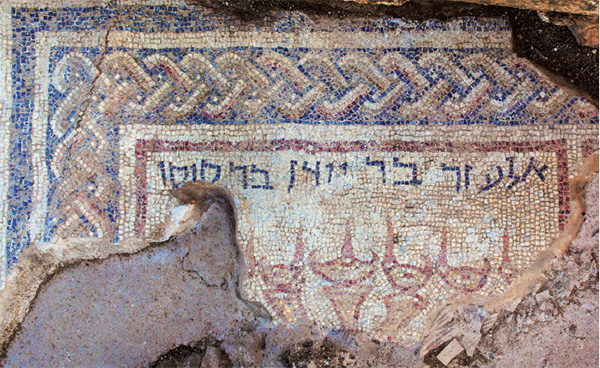
A unique menorah mosaic was recently uncovered on an ancient synagogue floor at Horvat Kur in the Galilee. Dated to the Byzantine period (fourth—seventh centuries), the mosaic depicts an elaborate seven-branched menorah (lampstand) with oil lamps resting at the top of each arm of the candelabrum. The lamp on the middle branch has its wick—and accompanying flame—in the very middle of the lamp. This type of lamp has not been attested in the archaeological record, but the lamps on the other arms of the menorah resemble well-known Byzantine types. These lamps face the center with their wicks and flames pointed toward the middle branch of the menorah.
Written across the top of the mosaic are three names: “El‘azar, son of Yudan, son of Susa [or Qoso].” The directors of the Kinneret Regional Project, who exposed this mosaic—Drs. Jürgen Zangenberg, Raimo Hakola, Byron R. McCane and Stefan Münger—think that these might be the names of prominent members of the Jewish community at Horvat Kur during the Byzantine period, or, they posit, perhaps El‘azar and his ancestors helped fund the construction of the synagogue.
The menorah became a popular symbol in synagogues during the Byzantine period, but both the Bible and archaeology demonstrate that it held significance for the Jewish people long before that.
Already a library member? Log in here.
Institution user? Log in with your IP address.

